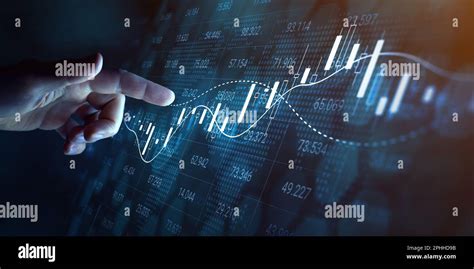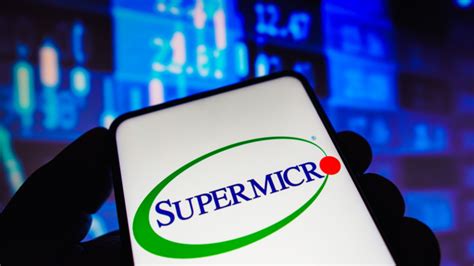Introduction
In the realm of finance, effective communication is paramount. One crucial tool that enables seamless information dissemination is the ticker, a device that displays real-time information about stocks, commodities, and other financial instruments. This article delves into the world of tickers, exploring their history, types, applications, and the transformative role they play in the 2025 financial landscape.

Origins of the Ticker
The genesis of the ticker can be traced back to the mid-19th century, when telegraph technology revolutionized the speed at which financial information could be transmitted. In 1867, Edward A. Calahan introduced the first ticker, which used Morse code to display stock prices in brokerages. This innovation sparked a technological revolution that continues to shape modern financial markets.
Types of Tickers
Over the years, various types of tickers have emerged, each catering to specific needs:
-
Tape Tickers: Also known as paper tape tickers, these devices use rolling paper to display stock prices, allowing traders to manually record information.
-
Electronic Tickers: These electronic displays provide real-time stock prices, market updates, and other financial data. They offer a more efficient and reliable way of tracking market movements.
-
Digital Tickers: The latest generation of tickers, these devices use digital technology to display a wide range of financial information, including charts, graphs, and news feeds.
Applications of Tickers
Tickers have become indispensable tools in financial markets, serving various purposes:
-
Price Discovery: Tickers provide traders with real-time information about stock prices, enabling them to make informed trading decisions.
-
Market Monitoring: By constantly displaying market activity, tickers allow traders and investors to monitor price fluctuations, identify trends, and assess market sentiment.
-
News and Information Dissemination: Modern tickers integrate news feeds, earnings reports, and other financial information, keeping users updated on market events and developments.
The Ticker in 2025: A Transformative Role
As we approach 2025, tickers are poised to undergo a significant evolution, driven by technological advancements and changing market demands:
-
Artificial Intelligence (AI) Integration: AI algorithms will enhance tickers’ ability to analyze and interpret market data, providing traders with actionable insights.
-
Blockchain Technology: The integration of blockchain technology will ensure data security and transparency, increasing trust in ticker information.
-
Personalized Experiences: Tickers will become more personalized, tailoring information and news feeds to individual users’ preferences and trading strategies.
-
Cross-Asset Functionality: Tickers will expand their scope to include information on a wider range of financial instruments, including cryptocurrencies, commodities, and bonds.
How to Use a Ticker
Using a ticker is relatively straightforward:
-
Obtain a Ticker: Choose a ticker type that aligns with your needs and budget.
-
Set Up Your Device: Connect your ticker to a data source (e.g., brokerage account, financial information provider).
-
Follow Market Activity: Monitor the ticker for real-time stock prices, market updates, and other relevant information.
Tips for Using a Ticker
-
Customize Your Ticker: Adjust the settings to display the specific information you need.
-
Use Multiple Tickers: Consider using multiple tickers to monitor different markets or assets simultaneously.
-
Understand the Data: Familiarize yourself with the types of information displayed on the ticker and how to interpret it effectively.
Benefits of Using a Ticker
Tickers offer numerous benefits to traders and investors:
-
Timely Information: Access to real-time market information enables you to make informed trading decisions.
-
Market Monitoring: Continuous market updates help you identify opportunities and manage risk.
-
Competitive Advantage: Tickers give you an edge by providing timely access to critical market information.
-
Improved Efficiency: By automating price discovery and market monitoring, tickers save you time and effort.
-
Increased Confidence: Access to accurate and up-to-date information enhances your confidence in trading decisions.
Limitations of Tickers
While tickers are valuable tools, certain limitations must be considered:
-
Delay in Data: Tickers may experience slight delays in displaying information, which can impact time-sensitive trading decisions.
-
Information Overload: Modern tickers can provide excessive information, potentially overwhelming users.
-
Technical Issues: Technical glitches can occasionally disrupt ticker functionality.
Alternatives to Tickers
While tickers remain a primary source of financial information, alternative options exist:
-
Financial Websites: Provide real-time stock prices, market updates, and analysis tools.
-
Mobile Apps: Offer similar functionality to tickers, but with the added convenience of portability.
-
Financial News Channels: Deliver market updates and analysis through television and online platforms.
Conclusion
Tickers have revolutionized the way financial information is disseminated, empowering traders and investors with timely and accurate data. As we move towards 2025, tickers will continue to evolve, integrating cutting-edge technologies and delivering personalized experiences. By harnessing the power of tickers, individuals can navigate financial markets with greater confidence and success.
Frequently Asked Questions
Q: What is the difference between a tape ticker and an electronic ticker?
A: Tape tickers use rolling paper to display stock prices, while electronic tickers use digital displays.
Q: How can I obtain a ticker?
A: You can purchase or rent a ticker from financial equipment suppliers or brokers.
Q: What information can I find on a ticker?
A: Tickers can display stock prices, market updates, news, and other financial data.
4 Key Tables on Tickers
| Ticker Type | Description |
|---|---|
| Tape Ticker | Uses rolling paper to display stock prices |
| Electronic Ticker | Uses digital displays to provide real-time market data |
| Digital Ticker | Leverages digital technology to offer a comprehensive range of financial information |
| Cross-Asset Ticker | Provides information on multiple financial instruments, including cryptocurrencies, commodities, and bonds |
| Ticker Applications | Benefits |
|---|---|
| Price Discovery | Enables traders to find the best prices |
| Market Monitoring | Helps traders and investors stay informed about market movements |
| News and Information Dissemination | Keeps users updated with financial events and developments |
| Personalized Experiences | Tailors information and news feeds to individual preferences |
| Ticker Limitations | Alternatives |
|---|---|
| Delay in Data | Financial Websites |
| Information Overload | Mobile Apps |
| Technical Issues | Financial News Channels |
| Ticker Evolution | Future Trends |
|---|---|
| AI Integration | Enhanced data analysis and insights |
| Blockchain Technology | Increased data security and transparency |
| Personalized Experiences | Tailored information and news feeds |
| Cross-Asset Functionality | Access to a wider range of financial instruments |



